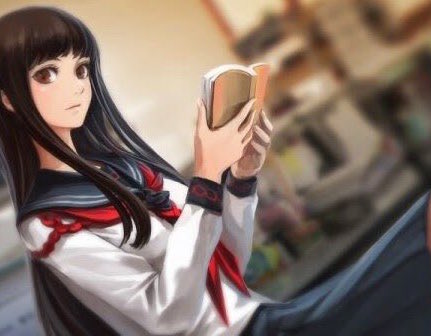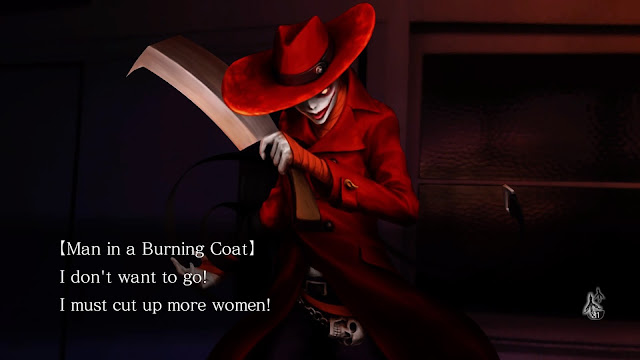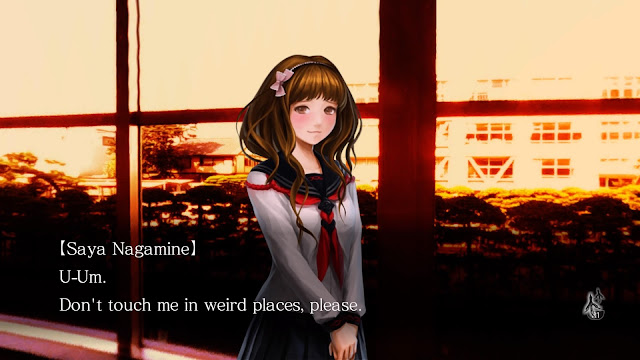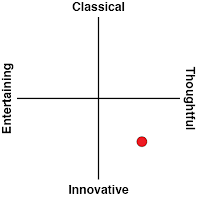Review by Matt S.
I honestly hope that Tokyo Twilight Ghost Hunters gets a better look in this time around, for what is effectively the “remastered” edition of the visual novel/ JRPG. Arriving on the PlayStation 4 for the first time, there are some basic updates and some new content for the Daybreak Special Gigs release, but for the most part it’s an excuse to delve back into one of the most distinctive and original visual novels you’ll ever play.
Tokyo Twilight heavily appropriates and then “Japanifies” the Ghost Busters formula. A small team of individuals with the unique ability to sense, and then combat, ghosts, comes together to earn some cash while dealing with the hauntings that other people are experiencing. This is the JRPG side of the game; with each haunting the team squares off against a squad of ghosts in a tactical turn-based style combat system.
These people also all have lives outside of the ghost hunting, which is where the visual novel stuff comes in. The main protagonist, as well as two of his allies, are school kids, going through the normal dramas of school life. The rest of the crew include a pseudo-dominatrix boss woman, who leads the team and also runs a magazine on the occult as a front to the ghost hunting, a guy that is surely a clone of Jack Black from School of Rock, a lazy dude that drives them around, and so on. The ensemble cast are eclectic and amusing, even if they don’t stray too far from anime or manga tropes, and there’s a good chemistry between them, which is immediately ingratiating.
Killed a tough ghost in one turn. Totes pro. ^_^ #PS4share https://t.co/si7BupVHgH pic.twitter.com/QbSDjpN3T1— Miku McMikuFace (@DigitallyDownld) October 15, 2016
The writing in general is well done, actually. The narrative structure breaks the ghost hunting down into a series of smaller quests, each presenting the team with a unique ghost and challenge to overcome. That episodic structure works to the game’s favour, bookending each mission with title credits (like you’re watching a TV show), and allowing for a lot of the character development to happen in relation to a wide range of different scenarios that the characters find themselves in.
Despite the frequent combat, and the darker themes that the game touches on at times (and we are talking about these as dark as suicide), the narrative works hard, and quite oddly at times, to retain an upbeat tone. Ghosts are positioned as amoral entities, and regardless of how destructive they are they are, we are meant to sympathise with them. The way the writing twists events to make this happen are both ridiculous and sublime at times – a ghost that was causing musicians guitars to burst into flame was apparently only doing so out of a love for rock music, for example, but the game does this, I suspect, because it wants players focusing on the relationships between the characters, rather than dwelling on the morality of everything that they’re getting up to.
For players returning from the previous game, there has been some additional narrative added in to give the characters better background and motivations. These additions are, surprisingly enough, substantial in tone, and I do think that fans of the original game will want to experience this extra depth. An additional scenario, “Daybreak” also helps build on the world that developer, Toybox, has created. I’m not sure if there’s any interest in the developer making a sequel, but I think there’s room to expand on the characters and world further yet, so fingers crossed on that count.
What is disappointing is that the developer didn’t take the “1.5 edition” of Tokyo Twilight as an opportunity to improve on the character interaction mechanic, which remains as obtuse and completely obnoxious as in the original game. At various points you’ll have the opportunity to interact with a character or situation, and at those points two different option wheels will pop up. The first offers players five choices for emotion with icons that look like “heart”, “tear”, “handshake”, “punch”, or “quiz” – which seems to stand for “love”, “sadness”, “friendliness”, “anger”, and “curious”. The other wheel then gives you the five senses to choose between – touch, taste, look, hear and smell.
The idea of these wheels is straightforward enough (though the game never bothers to actually explain them); the first wheel represents your intent, and the second represents how you’ll follow through with the intent. Frustratingly, there are situations where none of the options seems to fit, and the feedback you get while playing is useless; you’re rarely ever clued in to what options might be the best idea, and the impact of those decisions is never clear either. Every time I play this game I inevitably end up trying to lick the girls and ignore the guys, simply because it’s such an unintuitive system that I might as well just do what amuses me. I’m sure I’m locking myself out of significant portions of the narrative, but I just don’t care.
Though those damned wheels show up far too frequently for their own good, I don’t allow it to dampen my love of Tokyo Twilight, because the rest of the game is that much fun. The story is engaging, and the combat system is still so unique, and yet so fundamentally enjoyable that I wish more games copied it wholesale. For each battle you’re presented with a grid of graph paper, with a map of the environment drawn on to it. Your characters, and the ghosts, are represented by little icons. Each turn you’ll issue orders to your characters, and then they’ll be executed at the same time that the ghosts have their turn. This results in a highly tactical system whereby you need to try and predict the ghost’s movements, and then move your units around so that, hopefully, when they’re attacking they’re not swinging at empty air.
To make things a little easier, before each battle you’re also able to stick traps around, which can control a ghost’s movement or health. Some traps damage, while others block movement or convince the ghost to hang around a specific place for a while. In the original Tokyo Twilight, you were forced to place all these traps down yourself. With this remaster the game will suggest a layout from the start, though you’ll be able to override that if you’ve got other strategic ideas. This is a nice touch though, as it helps newer players get their head around what can be a pretty complex combat system to master.
Complex, but hugely enjoyable. Tokyo Twilight’s combat system looks and feels like an old grid paper-based parlour game; like Battleships, only more complex. There’s a real nostalgia to this design, even though the RPG mechanics behind it are more modern, and this unique blend of mechanics and tone is, as I said previously, unique. I’ve not seen another game offer what this game does, and while that does mean there’s a period of adjustment in getting used to it, once you’re there it is addictive stuff.
Returning players from the game’s predecessor will appreciate the tweaks to the gameplay that have made it easier to move characters around. The previous game did feel like it relied on luck at times, as if you guessed the way the ghost would move wrong, you were locked into a single attack direction. Now you’re able to take multiple actions each turn, for each character, and this takes some of the guess work out of the equation. Now, most characters will be able to cover a couple of different areas with each of their turns. Tokyo Twilight still has its challenging moments, but overall the game feels more fair this time around.
Speaking of nostalgia, there’s a beautiful sense of it from the game’s aesthetics and audio design, too. The soundtrack and art suggest an ‘80s or 90’s rock or even grunginess edge to the game, and it’s set against what looks like animated oil paintings. The level of detail that has been worked into the aesthetics marks Tokyo Twilight out to be one of the best looking visual novels of all. Some might be disappointed with the murky visuals during combat that can make enemies difficult to see, but as you’ve already planned out the moves, by the time battle rolls around you’re only passively watching, so the art doesn’t get in the way of the gameplay, and given that one of the key narrative themes is that it is difficult to ‘see’ ghosts, I see this visual design as enhancing that theme.
The result is a game that is genuinely unique. Classy in tone and hugely interesting in design, this is a game that is worth supporting simply on that basis; there’s some elements that don’t work as well as they should, but then that’s the consequence of experimentation. What is important is that the game is deeply playable, very creative, and hugely entertaining as a result.
– Matt S.
Editor-in-Chief
Find me on Twitter: @digitallydownld











